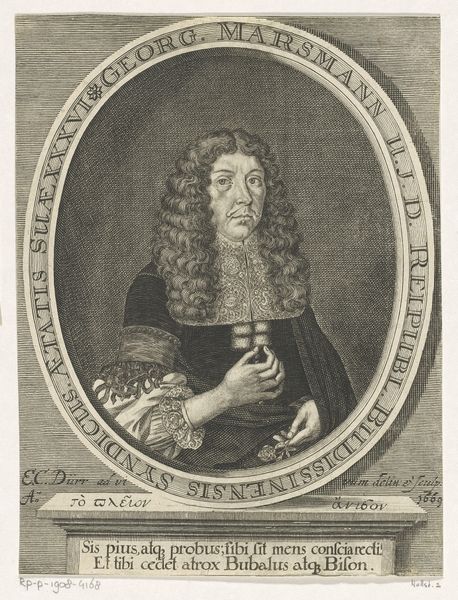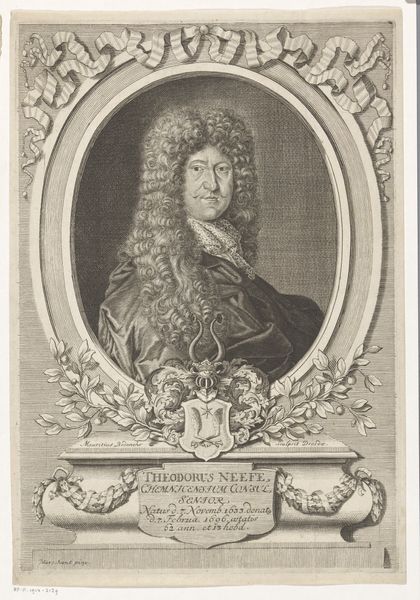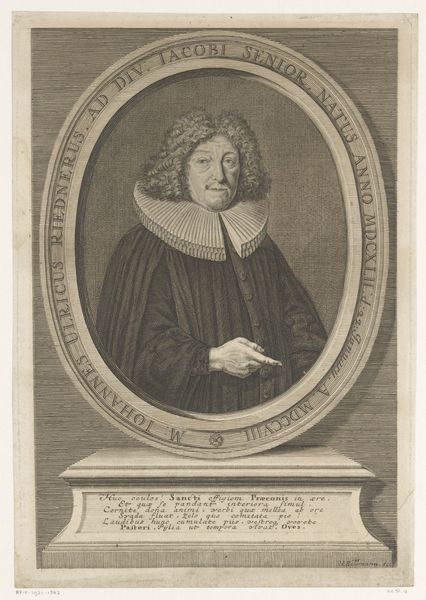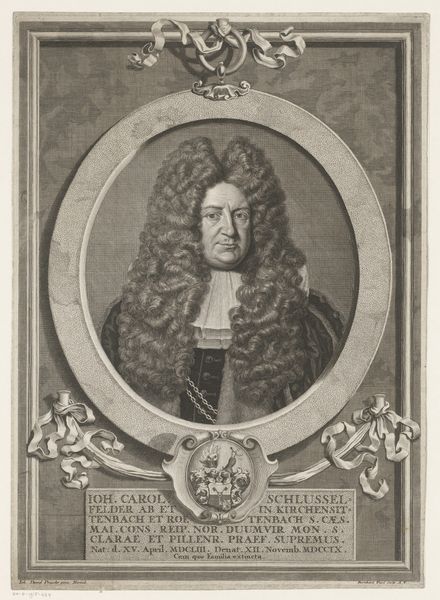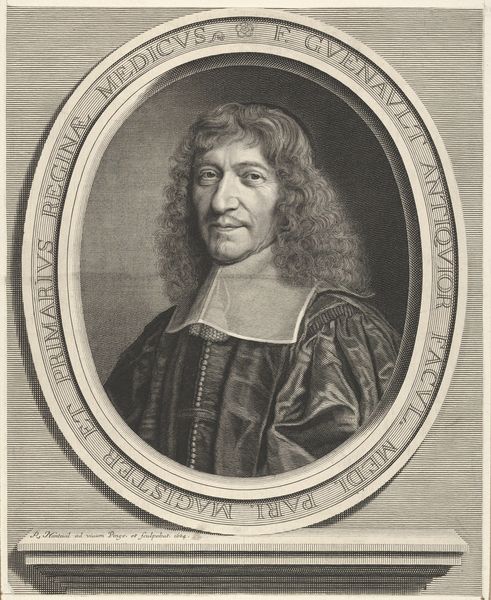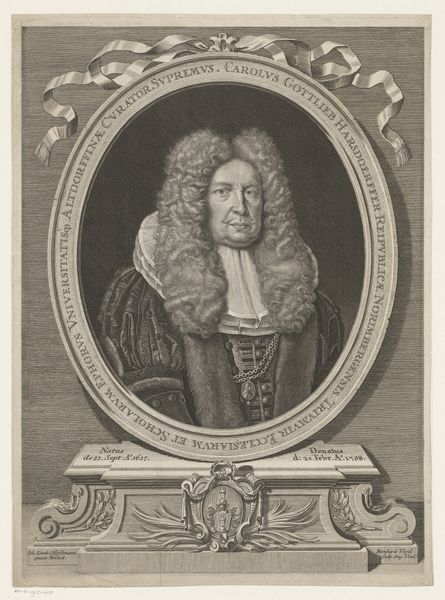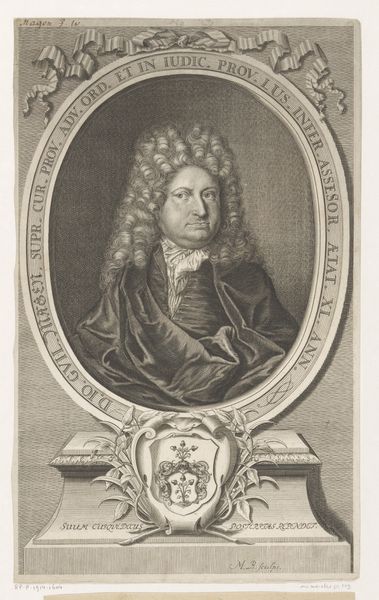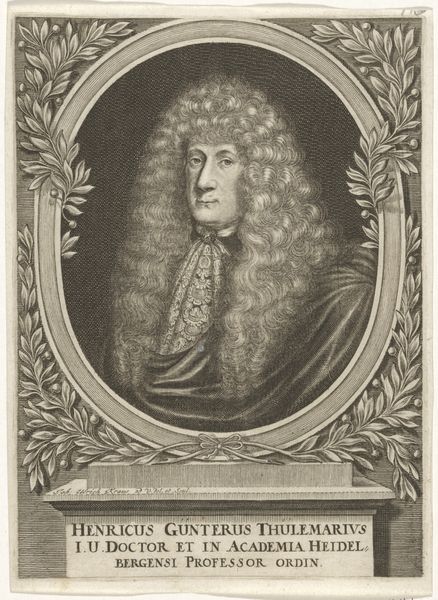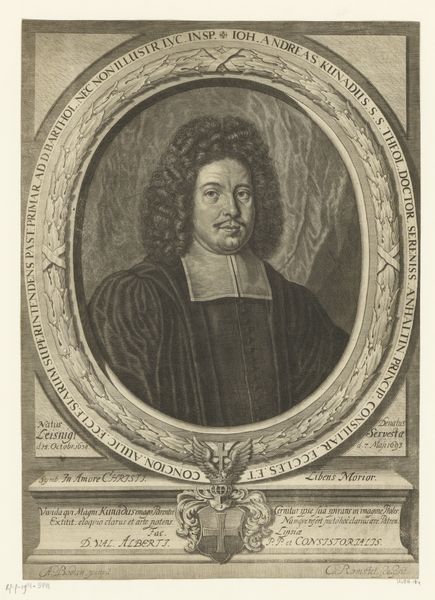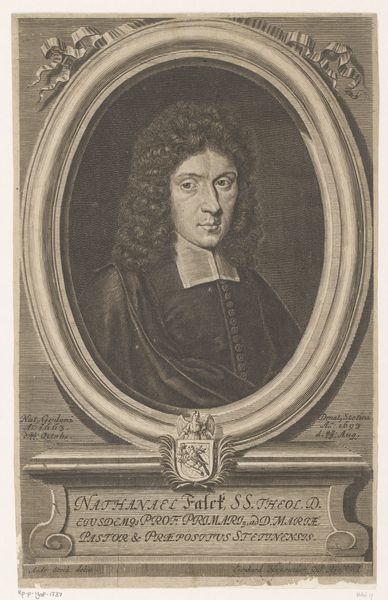
engraving
#
portrait
#
baroque
#
caricature
#
old engraving style
#
caricature
#
portrait drawing
#
history-painting
#
engraving
Dimensions: height 366 mm, width 268 mm
Copyright: Rijks Museum: Open Domain
Curator: Look at this remarkable engraving, "Portret van Carl Gottlieb Fürer von Haimendorf," likely made before 1737 by Bernhard Vogel. Editor: My first impression is how meticulously detailed it is. The crisp lines of the engraving really bring out the textures of his garments, particularly that elaborate lace collar! It has a sort of stolid formality about it. Curator: Absolutely. And it's important to remember who Carl Gottlieb Fürer von Haimendorf was. This portrait presents him not merely as an individual but as a figure emblematic of power structures in 18th-century society. His title is inscribed around the portrait and translates to: "High prefect". This depiction reinforces notions of aristocratic authority. Editor: Notice how Vogel uses line work to build volume and shading. The portrait’s set within an oval, and it seems every millimeter of space is activated. The way light falls creates areas of deep shadow and precise highlights, especially across the face and within the curls of the wig. It is a brilliant study in the technical capabilities of the medium of engraving. Curator: Precisely! Beyond its technical prowess, there's a fascinating tension to consider. The work leans into caricature with exaggerated features like the large wig. The contrast can be read as subtle critique of power and excessive display, which was characteristic for those in positions of power, especially within the history-painting tradition of the time. Editor: I am seeing something a little different. The ribbon around the oval with text seems less celebratory and more constraining. Is there a relationship here with semiotics and what you might find by examining portraiture from a theoretical stance? Curator: Definitely! It shows an image of a particular social identity through clothing and surrounding design motifs of wealth, creating a window into cultural beliefs of that period. It’s amazing how Vogel can distill complex messages about identity and society through a fairly static, conventional form. Editor: Well, thinking about the crispness and technical elements has given me an even greater appreciation of the visual language at work. Curator: And seeing those visual strategies set in historical context reminds us of the dynamic between portraiture and societal representation in 18th-century art.
Comments
No comments
Be the first to comment and join the conversation on the ultimate creative platform.


